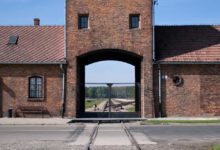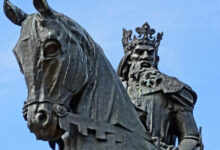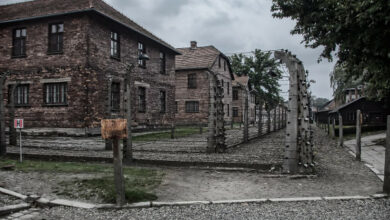Auschwitz-Birkenau, the largest of the Nazi concentration and death camps, remains a haunting reminder of the tragic history of the Holocaust. Located in southern Poland near Krakow, this museum attracts over two million visitors each year who come to learn about the past and pay their respects to the victims. If you are planning a visit to this historically significant site, it is important to plan your journey carefully and approach your visit with the right mindset.
You can choose to visit Auschwitz either independently or as part of a guided tour. While reaching the site by car or using public transport is a valid option, many find that joining a tour provides a more enriching and stress-free experience, as all aspects of the visit are taken care of for you. No matter how you choose to visit, remember that admission to the grounds of the Auschwitz-Birkenau Memorial is free of charge.
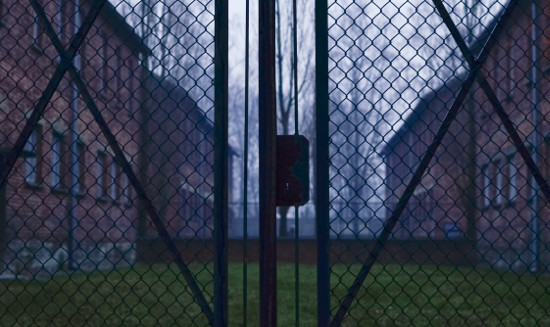
Before embarking on your trip, it is essential to educate yourself about the history of Auschwitz and the Holocaust. Many resources, including the European pack for visiting Auschwitz-Birkenau Memorial and Museum, are available to help prepare for this emotional and thought-provoking experience. By understanding the historical context and significance of the site, you can ensure your visit is respectful and meaningful.
Table of Contents:
Understanding Auschwitz
Auschwitz was a complex of concentration and extermination camps built and operated by Nazi Germany during World War II. It was the largest of the Nazi death camps, and its primary objective was the systematic extermination of Jews as part of the Holocaust. Over 1.1 million prisoners, most of them Jewish, died in Auschwitz, with approximately 9 million people killed across all Nazi death camps Read also (Auschwitz gate meaning).
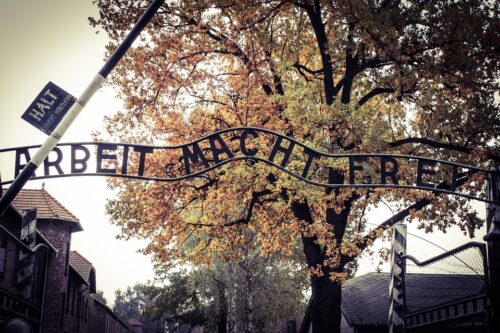
When you visit Auschwitz, it is crucial to comprehend the magnitude of the atrocities committed there and the broader context of the Holocaust.
As you tour the grounds, you will encounter various sites, exhibits, and information that help convey the tragic history of Auschwitz and its role as both a concentration and extermination camp. Take the time to engage with the guides and educators present. They can offer valuable insights and bring context to the experience.
Auschwitz-Birkenau, as it is commonly known, consists of two main camps: Auschwitz I and Auschwitz II-Birkenau. Auschwitz I was the first camp established and contained the SS command, administration, and the infamous Arbeit macht frei (Work sets you free) gate. Auschwitz II-Birkenau, on the other hand, was primarily an extermination camp with four large gas chambers where mass murders took place. It is essential to understand the difference between these two camps and their functions within the complex.
To enhance your comprehension of the gravity of these events, it is recommended to engage in supplementary learning before and after your visit. Read about the historical context of the Holocaust, and consult first-hand accounts, memoirs, and documentaries to better understand the experiences of those who were imprisoned and suffered at Auschwitz. This will further enable you to empathise with the victims and appreciate the vital role that Auschwitz and similar sites play in preserving the memory of the Holocaust. This deeper understanding will ensure that the lessons of history are not forgotten and are used to foster a more empathetic and tolerant society.
Getting to Auschwitz
Auschwitz-Birkenau, a significant historical site that symbolises the Holocaust and the atrocities committed during World War II, can be reached by various means of transportation, depending on your preference and location in Poland.
If you’re staying in Kraków, it’s relatively easy to access Auschwitz. You can choose to travel by train, bus, or car. Trains are a comfortable option, although the frequency may vary depending on the time of day. Buses, on the other hand, offer a cheaper alternative but might take more time, with a one-way journey lasting around 1 hour and 45 minutes.
When travelling from other cities like Katowice, Warsaw, or Wroclaw, there are tour options available to help facilitate your visit, taking care of transportation and other logistics. Alternatively, you can travel independently, driving your car or using public transport options.
If you’re arriving from abroad, it’s important to consider which airport is most convenient for your visit to Auschwitz. There are several airports near the site, each with its own advantages and disadvantages, depending on your itinerary and preferences.
Upon reaching the Auschwitz Museum, a museum bus shuttle operates for visitors to transport between the Auschwitz I and Auschwitz II-Birkenau camps. The bus service is free and departs every 10 minutes from April to October and every 30 minutes from November to March. Read also Auschwitz March Tour
The Auschwitz Tour
When planning your visit to Auschwitz, you might be considering a Auschwitz guided tour from Krakow. A guided tour can offer a deeper understanding of the history of Auschwitz as it covers both Auschwitz I and Birkenau (Auschwitz II-Birkenau). There are several tour options available to you.
You can visit Auschwitz either as part of a tour from where you are staying in Poland or independently, reaching the site by car or using public transport. Taking a tour from your accommodation is a slightly more convenient option, as everything will be taken care of for you. This could be the best Auschwitz tour from Krakow, for instance.

The general tour is one of the available guided tours, which covers the main sites and offers a comprehensive overview of the history and significance of the Auschwitz-Birkenau complex. Visitors are provided with a guide-educator, which can greatly enhance your understanding of the events that took place there. If you prefer a more in-depth experience, you can opt for a one or two-day study tour, or even an individual tour.
In conclusion, your visit to Auschwitz can be greatly enriched by joining a guided tour. There are a variety of tour options to suit your needs and preferences, whether it’s a general tour, a more in-depth study tour, or even one tailored to individuals. Remember that public transport and shuttle buses are available, and that although the entry to the memorial is free, guided tours will include a fee.
Booking Your Visit
Planning a visit to Auschwitz, the former Nazi concentration and extermination camp, requires some preparation. To ensure a smooth experience, it’s important to book your entry passes in advance. You can make reservations online at visit.auschwitz.org or on the spot at the cashier.
However, due to high demand, it is strongly recommended to reserve your tickets online ahead of time.
Visitors are advised to arrive at least 30 minutes before the start of the tour. The number of entry passes available each day is limited, so booking in advance will guarantee your admission. If you’re planning on visiting during the peak season, which runs from April to October, it’s especially crucial to secure your tickets ahead of time.
There are several options for visiting Auschwitz. You can choose between a private Auschwitz tour or an independent visit, in which you’ll need to reach the site by car or public transport. A guided tour is advised to fully understand the historical significance of the place.
Regardless of the type of visit you choose, all visitors, including those in organised groups, must carry their personalised entry passes and ID. Be aware that children under the age of 14 are not recommended to visit the museum. However, older children can participate in the tours, as long as they are accompanied by an adult.
Once you have secured your tickets to Auschwitz, be sure to review any additional rules and guidelines provided to ensure the most respectful and informative experience possible. This historical site offers a valuable opportunity to learn from the past and honour the memories of those who suffered there.
What to Expect
When visiting Auschwitz, you can expect to encounter a sombre and sobering experience. As a museum and former concentration camp, it serves as a stark reminder of the Holocaust and the atrocities committed by the Nazis during World War II.

Upon arrival, you will undergo a security check, so it is advisable to leave your luggage at your accommodation or in a secure storage facility nearby. Depending on the time of year and the number of visitors, the security process could take some time, so plan accordingly.
The Auschwitz-Birkenau complex consists of two main sections: Auschwitz I and Auschwitz II-Birkenau. It is essential to visit both in order to gain a proper understanding of the camp’s history. Auschwitz I is where the Nazis first established the concentration camp for male and female prisoners, while Auschwitz II-Birkenau was the larger extermination camp, complete with gas chambers and crematoria.
As you explore the grounds, you will see various exhibitions and displays that document the lives of the prisoners, including their personal belongings, photographs, and testimonies. Additionally, you will come across the gas chambers and crematoria, which can be extremely confronting, so it is important to be emotionally prepared for this experience.
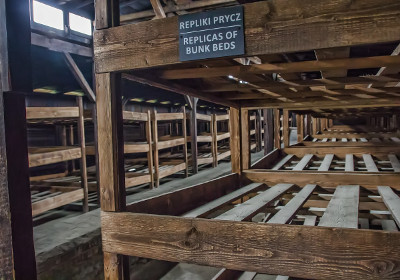
Throughout your visit, make sure to show respect for the Auschwitz Memorial and the memory of those who suffered and perished there. It is a place for reflection and learning, and as such, it is essential to maintain a respectful attitude and demeanour.
In summary, a visit to Auschwitz can be an intensely emotional and moving experience. By understanding the significance of the site and being prepared for the powerful displays and stories, you will be able to engage with the history in a meaningful and respectful way.
Dos and Don’ts at Auschwitz
Visiting Auschwitz-Birkenau is a powerful and emotional experience, therefore it’s important to follow certain dos and don’ts to show respect and be mindful of the site’s significance.
Firstly, when it comes to photography, taking photographs is allowed but not in all areas. There are some places where photography is prohibited. Make sure you pay attention to the signs and always follow the guidelines provided by the museum. If allowed, take photographs respectfully and avoid taking selfies or posing inappropriately.
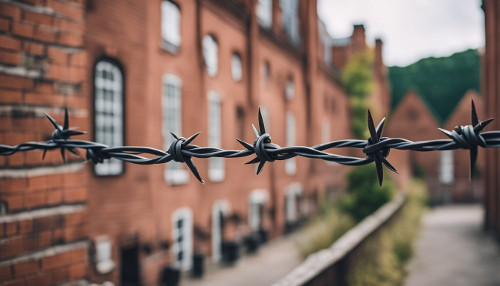
Regarding attire, it’s essential to dress modestly and respectfully when visiting Auschwitz. Casual and comfortable clothing is suitable, but avoid wearing clothes with offensive language or imagery. Keep in mind that Auschwitz is a place of remembrance and reflection, so your attire should reflect the solemnity of the site. If you are unsure about what to wear, read the article Auschwitz Dress Code for guidance.
It’s crucial to maintain silence and be respectful at all times while visiting the site. Avoid any loud or inappropriate behaviour, as it could be insensitive to other visitors and disrespectful to the memory of the victims. Instead, use your time at Auschwitz for reflection and to learn about the tragic events that took place there.
For practical reasons, it is advised to leave your large backpacks and handbags behind. You are not allowed to bring bags larger than 30x20x10 centimetres into the Memorial. There is a luggage storage facility available, but it is limited in capacity and costs extra.
Lastly, while visiting, follow the rules and guidelines provided by the museum, and make sure to respect any instructions or requests made by the staff. This will ensure you have a meaningful and respectful experience at Auschwitz-Birkenau and contribute to preserving the memory of the victims.
Alternatives and Extras
While planning your visit to Auschwitz, you may want to consider additional attractions and alternative ways to enhance your experience. One excellent alternative is Wieliczka Salt Mine, a unique and fascinating destination.
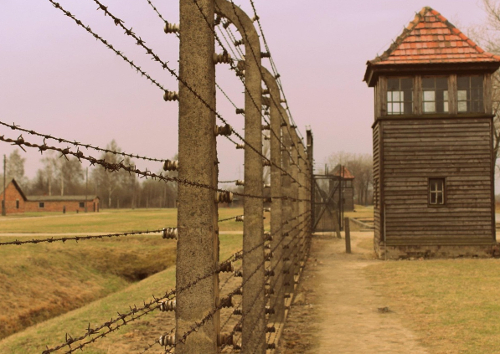
To make the most of your time in Poland, you could embark on a combined tour of Auschwitz and the Wieliczka Salt Mine. This combination allows you to gain insights into significant historical events while also experiencing the wonder and beauty of the salt mines.
Another way to experience Auschwitz and the surrounding areas of Poland is to take a day trip from Krakow. Krakow, the closest major city to Auschwitz, serves as an excellent base for exploring the region. A day trip to Auschwitz from Krakow enables you to delve into the heart of one of the darkest chapters in history while immersing yourself in the culture and scenery of southern Poland.
This option offers a powerful and unforgettable experience as you journey through this poignant and historical area.
Choosing between a guided tour and an independent visit is another aspect to consider. A guided tour typically includes transportation, ticketing, and guidance, making it the more convenient option. However, visiting independently allows for greater flexibility and the opportunity to join a guided tour on site, if desired.
No matter how you decide to visit Auschwitz and the surrounding attractions, your experience in Poland will undoubtedly be an enriching and educational one.
Frequently Asked Questions
What are the ticket prices for Auschwitz?
Admission to the grounds of the Auschwitz-Birkenau Memorial is free of charge. Entry cards should be reserved on visit.auschwitz.org. If you’d like to enhance your understanding of the history of Auschwitz, you can opt for a visit with a guide-educator; fees apply for this service. For more information on tour prices, read Auschwitz Tour Price.
What is the most convenient way to travel to Auschwitz?
The most convenient way to visit Auschwitz depends on your preferences. You can either arrange your own transportation to the site, or join an organised guided tour that includes transportation. Kraków, the nearest city to the Auschwitz-Birkenau concentration camp, offers various tour options that provide transportation, ticketing, and guidance, ensuring a hassle-free experience.
Can one visit Auschwitz independently?
Yes, you can visit Auschwitz independently. If you prefer, you can organise your own transportation to the camp, reserve your entry card on visit.auschwitz.org, or on getyourguide and explore the grounds at your own pace. Remember that admission to the Auschwitz-Birkenau Memorial is free of charge.
Are guided tours required to visit Auschwitz?
Guided tours are not mandatory for visiting Auschwitz. However, they are recommended for a better understanding of the site’s history. You can either visit the camp as part of an all-inclusive guided tour, which takes care of transportation, ticketing, and guidance, or explore independently and join a guided tour upon arrival at the museum.
How do I book an Auschwitz and Salt Mine combined tour?
Combined tours of Auschwitz and the Salt Mine are widely offered by tour operators in Kraków. Make sure to research your options and book a tour that suits your preferences, ensuring it includes transportation, ticketing, and guidance for both sites.
What’s the process for a self-guided tour of Auschwitz?
For a self-guided tour, start by reserving your entry card. Next, organise your own transportation to the site. Upon arrival, you can explore the grounds independently at your own pace. Keep in mind that while self-guided tours offer the freedom to explore, a guided tour is recommended for a deeper understanding of the history of Auschwitz.



